

Cookies with a Cop building stronger community relationships with local police department
By Sienna Chubak | s.chubak@thecityjournals.com

The West Jordan Police Department held their Cookies with a Cop event on July 9 in Veterans Memorial Park.
Editor’s note: In this special edition you’ll find articles related to all things food.
The West Jordan Police Department held one of their Cookies with a Cop events on July 9. They began the events three years ago, and they have continued to bring in a large number of families and community members to enjoy their homemade cookies and talk to their local police officers.
Sergeant Andrew Hercules said, “It’s a good opportunity just to have people from the community come out, and the cookies specifically, I think, bring families out. And it gives us an opportunity to engage with both the parents who often have questions for us, and we can provide answers, and then it gives us an opportunity to engage with the kids that come out as well.”
The WJPD holds the Cookies with a Cop events in relaxed, non-stress environments, such as their Police Community room, local libraries, or parks, such as the Veterans Memorial Park where this event took place. The goal is to have a space for members of the community to interact with their local police officers.
Hercules explained, “We have had multiple events where we’ve been able to have an interaction with somebody who genuinely needed to speak with a police officer about something that was happening in their personal life that needed police attention, and this was a good opportunity


to bring the kids and let them engage with a police officer, while the parent really needed to report a lot of criminal activity that had been happening, they were able to speak with a police officer in that nontense environment. And so we found these to be really beneficial.”
As for the events themselves, they have a variety of different departments they bring out. This event was paired with the Motor Division, but they have also had events with the SWAT team and their canines. The kids are able to sit on the motorcycles, hold the shields and interact with the canines to better understand how these police resources are used.
“Many of these police officers here are D.A.R.E officers. They’re getting to re-interact with the kids that they just taught during the school year, and now it’s during the summer, and they get really excited to see that officer. But also, some of these kids haven’t had that D.A.R.E. officer yet, but now they have an interaction with them beforehand. It gives them an opportunity to have a familiar face,” Hercules said.
Hercules explained that these events are something that the officers are eager to be a part of and many of them will join without being asked to do so. He said, “We have a very supportive community in West Jordan, which is why it’s such a great place to work. And our officers do care about this community a lot.” Even police officers who are off duty will bring their own kids to join in the events.
The WJPD holds several Cookies with a Cop events each year and posts about them on the City of West Jordan events calendar and their social media platforms. l

Special Food Edition
Officers T. Griffith and S. Hutchings with their homemade cookies. (Sienna Chubak/City Journals)



Reclaiming Life: Innovative Approaches to Managing Chronic Pain
For many, chronic pain is a relentless companion, impacting every facet of daily life. But hope is on the horizon. Breakthroughs in pain management being used at CommonSpirit hospitals are offering new avenues for relief, moving beyond traditional methods to provide more targeted and effective solutions.
Chronic lower back pain is one of the most common challenges. One of the most promising advancements for managing chronic low back pain, particularly for individuals suffering from vertebrogenic pain, is radiofrequency ablation (sometimes referred to as Intracept). This minimally invasive treatment is designed to provide long-lasting relief and improve overall quality of life by addressing the source of the pain, rather than simply masking the symptoms. In this procedure, a small probe is inserted through a tiny incision and guided to the basivertebral nerve and then radiofrequency ablation is used to disrupt the nerve’s ability to transmit pain signals.
“Radiofrequency ablation represents a significant shift in how we approach chronic lower back pain,” explains Dr. Snigdha Ancha, a leading pain management specialist. “By directly targeting the nerve responsible for transmitting pain, we can provide lasting relief for patients who haven’t found success with other treatments.”
But what makes radiofrequency ablation
so effective? Traditional pain management often relies on medications, physical therapy, or injections, which can provide temporary relief but don’t always address the underlying cause. Intracept, on the other hand, offers a more permanent solution by disrupting the pain pathway. Studies have shown significant reductions in pain scores and improved function in patients who have undergone the procedure.
Beyond radiofrequency ablation, other innovative techniques are gaining traction. Neuromodulation therapies, such as spinal cord stimulation (SCS), are becoming increasingly sophisticated. These devices deliver mild electrical impulses to the spinal cord, interrupting pain signals before they reach the brain. Newer SCS systems are designed to be more comfortable and customizable, allowing for personalized pain relief.



“We’re seeing remarkable results with neuromodulation,” says Dr. Jeffrey Pence, a pioneer in pain management technology. “The ability to fine-tune the stimulation to match each patient’s unique pain pattern is a game-changer. It’s not just about reducing pain; it’s about restoring quality of life.”
In addition to these advanced procedures, a holistic approach to pain management is crucial. This includes:
• Physical Therapy: Strengthening muscles, improving flexibility, and restoring function
• Cognitive Behavioral Therapy (CBT): Helping patients manage pain through coping strategies and behavioral changes
• Mindfulness and Meditation: Reducing stress and improving pain tolerance
It’s important to remember that pain management is not a one-size-fits-all solution. The best approach is tailored to each individual’s specific needs and circumstances. A comprehensive evaluation by a qualified pain management specialist is essential to determine the most appropriate treatment plan.
If you’re living with chronic pain, don’t lose hope. The advancements in pain management are offering new possibilities for relief and a chance to reclaim your life. Talk to your doctor about the latest techniques and find a path that works for you.

Learn more about the services, care providers and missiondriven work of the Holy Cross hospitals and CommonSpirit Health at www.holycrossutah.org.

At CommonSpirit Health, we make the healing presence of God known in our world by improving the health of the people we serve, especially those who are vulnerable, while we advance social justice for all.
Get to know us before you need us.
When you need emergency care fast, the closest emergency room is a smart thing to know. You never know the level of care you’ll need when an emergency happens and choosing the right ER can make all the difference. And a hospital ER comes with the confidence of additional services right on-site.
Congratulations to CommonSpirit Holy Cross Hospital – Jordan Valley for receiving the Leapfrog Hospital Safety Grade-A Accreditation for the fourth consecutive time. Leapfrog Hospital Safety Grades are determined based on a rigorous assessment of various safety measures.
Find emergency care close to you at mountain.commonspirit.org.
i số 1-303-673-8166 (TTY: 711).
Savor the last days of summer with local foods and festivals
Eat up everything summer has to offer with festivals and events celebrating beloved local ingredients, rich cultural cuisine and skilled culinary artisans.
By Jet Burnham j.burnham@mycityjournals.com
Indian Food Fair
Aug. 2, 11 a.m.-8 p.m. at Liberty Park
Spice up your summer with the fragrant flavors of Indian cuisine featured at the sixth annual Indian Food Fair. Enjoy authentic food, music, dance and culture.
Festival Gastronomico Mexicano
Aug. 2, 4-9 p.m. at Centro Civico Mexicano, 155 S. 600 West
Utah’s first Mexican Food Festival will feature authentic dishes, drinks and desserts highlighting the culinary diversity of the several regions of Mexico. Local restaurants, food trucks and traditional cooks and chefs will showcase the traditional and contemporary dishes that celebrate Mexico’s culinary cultural heritage.
Bear Lake Raspberry Days
Aug. 7-9 in Garden City
Bear Lake Raspberry Days celebrates all things raspberry to eat, drink and buy. Come for the famous Bear Lake raspberry shakes and stay for the nighttime Boat Light Parade and fireworks. The three-day celebration includes the traditional Main Street parade, boat parade, craft fair, carnival rides, group Zumba, live music, rodeo and fireworks. Dive into the fruity fun of the raspberry pie eating contest or delight in the razzle dazzle of the talent show. Compete for prizes and bragging rights by joining the kid’s fishing tournament, 5K fun run, golf scramble or cornhole and pickleball tournaments.
Aug. 15, 4-9
Club at Rice Eccles Stadium
This sweet event turns lemons into lemonade by raising money for childhood cancer research through Alex’s Lemonade Stand Foundation. Cool down with refreshing lemonade and appetizers provided with free admission. Step into the casino room, place a bid at the silent auction or enjoy family-friendly activities and access to the field.
2025 Utah Cheese Awards Tasting Reception and Medal Ceremony
Aug. 24, 2-5 p.m. at 2Row Brewing in Midvale
A buffet of locally made cheese, fruit, honey, hot sauce, sweet sauce and more will celebrate this year’s top Utah cheesemakers and makers of cheese plate foods. Tickets to taste the buffet of the winners’ wares are $20, online or at the door.
Payson City Golden Onion Days
Aug. 29-Sept.1 in Payson
For 96 years, the people of Payson have celebrated their agricultural heritage with an onion festival. The many layers of the event offer something for every interest including a historic children’s parade, soap box derby, baby contest, talent show and car show. Residents compete for the prize of the biggest homegrown onions at the art and flower show. And, of course, there are food vendors selling onions of the “bloomin’ onion” variety to hungry festivalgoers.
Hooper Tomato Days
Aug. 30-Sept. 1 in Hooper
Hooper Tomato Days is bursting with tomato-town charm and themed activities such as the 5K Tomato Chase, Cherry Tomato Baby Show and Miss Pink Tomato pageant. With all the fixings of a traditional community spirit festival—barbecue competition, pancake breakfast, rodeo, live music, parade and fireworks—this year will honor its milestone 100th year by including features from the earliest years of the event such as a traveling band riding around town to rouse residents for the first day of the festival. The event also features unique small-town sport with its dog race, cow drop con-

test, kids sawdust scramble and trash fishing.
Salt Lake Greek Festival
Sept 5-7, Friday and Saturday 11 a.m.-10 p.m., Sunday noon to 8 p.m.
Journey to the land of rich food, lively music and charming culture at the 49th annual Greek Festival. Sweet and savory Greek delicacies and traditional bouzouki music are as close as the north parking lot of Holy Trinity Cathedral at 279 S. 300 West in SLC.
11th annual Eat Drink SLC
Sept. 10 and 11, 5-8 p.m. at Tracy Aviary
Enjoy an elevated culinary experience sampling food and drink from locally owned restaurants, craft breweries and artisan purveyors while enjoying live music and dance performances.
SLC VegFest
Sept. 13, 12-8 p.m. at Library Square
Sample vegan dishes from local restaurants or discover your new favorite vegan baked goods at the ninth annual SLC VegFest. This local celebration of veganism and plant-based eating is family friendly, with a kids area and live music. An adults-only beer garden features all vegan varieties.
Festa Italiana
Sept. 13 and 14, Saturday 11 a.m.-10 p.m.,
Sunday 11 a.m.-7 p.m. at The Gateway Plaza
Slurp, swallow and savor a variety of region-based Italian cuisines, beer and wine as proud Italian-Americans celebrate their roots. Watch cooking demos and explore arts and crafts booths, or compete in the pizza or pasta eating contests. Learn about Italian culture through historical displays, live music, street performers, vintage bike show and exotic Italian car displays.
Brigham City Peach Days
Sept. 19 and 20 in Brigham City
Have a peachy keen time celebrating with a community proud of its produce. Peaches are the highlight of the event but the two days of festivities also include music concerts, car show, Harley and Custom Bike Show, quilt show and two different parades. Don’t miss the Brigham’s Beard Competition with categories for best mustache, best goatee, longest beard and best peach fuzz.
Melon Days Festival
Sept. 19 and 20 in Green River
For 119 years, Green River has celebrated their famously tasty melons and their growers with a parade and craft fair. Enjoy a slice of smalltown enthusiasm for melons at this year’s breakfast in the park, melon carving, photo contest, pony/unicorn rides, softball tournament, Fun Shoot, Melon Run, junior entrepreneur market and golf scramble. l
WEST JORDAN TEAM
The West Jordan Journal is a monthly publication distributed directly to residents via the USPS as well as locations throughout West Jordan.
For information about distribution please email hello@thecityjournals.com or call our offices. Rack locations are also available on our website. The views and opinions expressed in display advertisements do not necessarily reflect or represent the views and opinions held by Loyal Perch Media or the City Journals. This publication may not be reproduced in whole or in part without the express written consent of the owner. © 2019 Loyal Perch Media, Inc.
Bryan Scott | bryan.s@thecityjournals.com
EDITOR
Travis Barton | travis.b@thecityjournals.com
Mieka Sawatzki | mieka.s@thecityjournals.com
Lindsay Andreasen | lindsay.a@thecityjournals.com
Jason Corbridge | jason.c@thecityjournals.com
Ryan Casper | ryan.c@thecityjournals.com
Marc Davis | marc.d@thecityjournals.com
Lydia Rice | lydia.r@thecityjournals.com 385-557-1022
Rack
South 500 West, Suite 205 Sandy, UT 84070 PHONE: 801-254-5974

Lemon Bash
p.m. at Ken Garff University
Watermelons are featured prominently in the annual Melon Days parade. (Photo courtesy Robin Hunt)
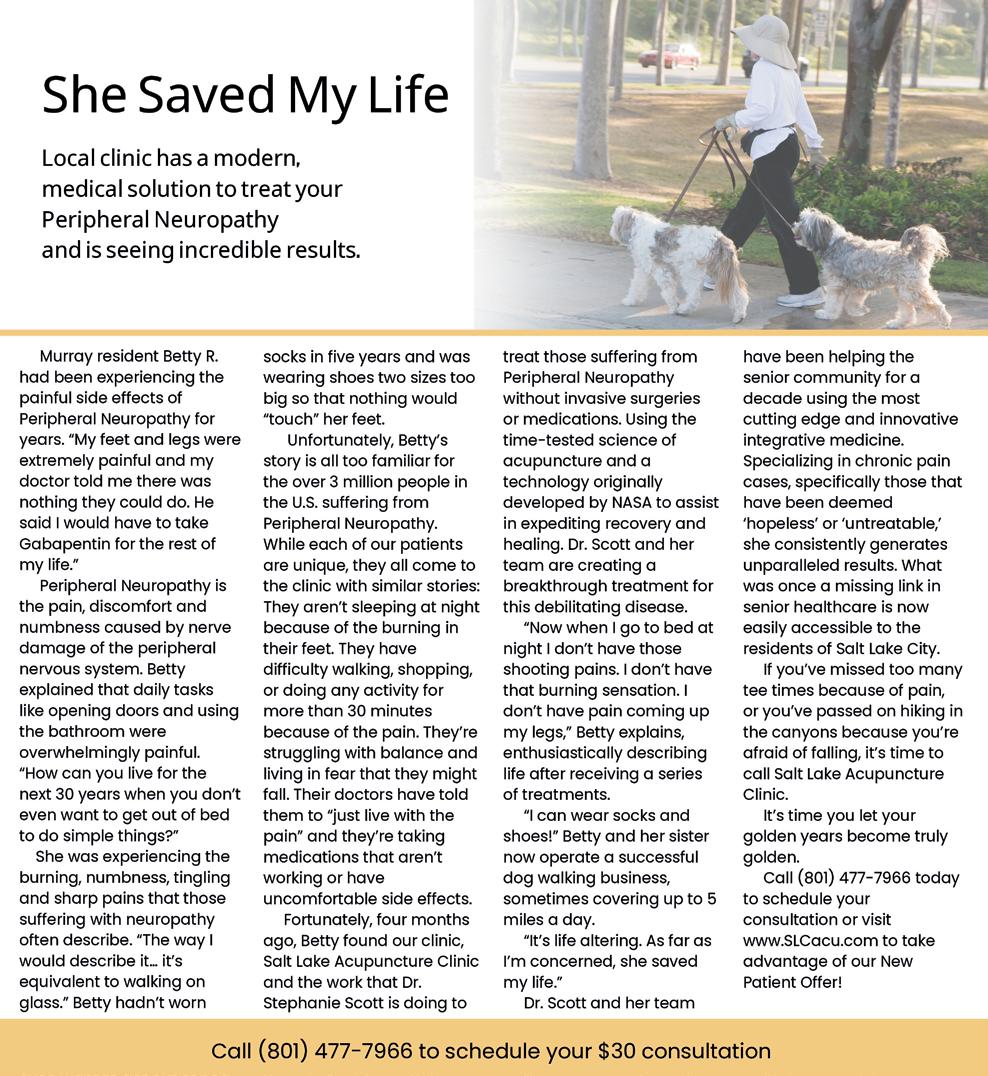
Sowing the seeds of knowledge in fields, farms, food industries
Teens dig into hands-on learning experiences with local plant and animal agriculture.
By Jet Burnham j.burnham@mycityjournals.com
Future Farmers of America summer agriculture students not only understand where their food comes from, but they are actively involved in the process. Their summer has been spent growing their own food, raising livestock for auction, engaging with animals in the community and touring local agricultural sites.
“They choose their project and then we are just there to help them develop goals and help them improve through their project,” Jordan Academy of Technology and Careers agriculture instructor Sydnee Roholt said.
One of the most popular summer programs is raising sheep, goats and pigs to show and sell at the Salt Lake County Junior Livestock Show and auction taking place Aug. 6-9 at the Bastian Agricultural Center in South Jordan.
Miley Berg, a senior at Bingham High School, said the hands-on experience of caring for a lamb this summer has been good preparation for her future career as a veterinarian. She has learned what her lamb Eloise likes, where she prefers to be rubbed and how to calm her down.
Riverton High School junior Rachel Baggaley was excited for the chance to raise a lamb even though she knows it will be slaughtered for food.
“I eat meat and I understand and know where it comes from,” Baggaley said. “I know at least that she got someone that loved her, so I thought that it’d be better than her just not being cared about.”
Students become attached to their animals because they visit them every day all summer to feed, groom and train them. Jameson Evans became quite attached to his sickly goat last year as he nursed him back to health before he was donated to the food bank.
“I was happy that he was going to a family who needed him the most, and that’s what really gets me through this, that they’re going to the family that really needs the food,” he said.
Although Evans graduated from high school this year, he jumped at the chance to participate in the summer ag program one last time.
“I did it last year and it was super fun—it was the best summer of my life,” Evans said. “It brought me into an industry that I am passionate for, and I got another opportunity to do it even after I graduate so I was going to take the opportunity. It is honestly a life changing experience that I wouldn’t trade for the world.”
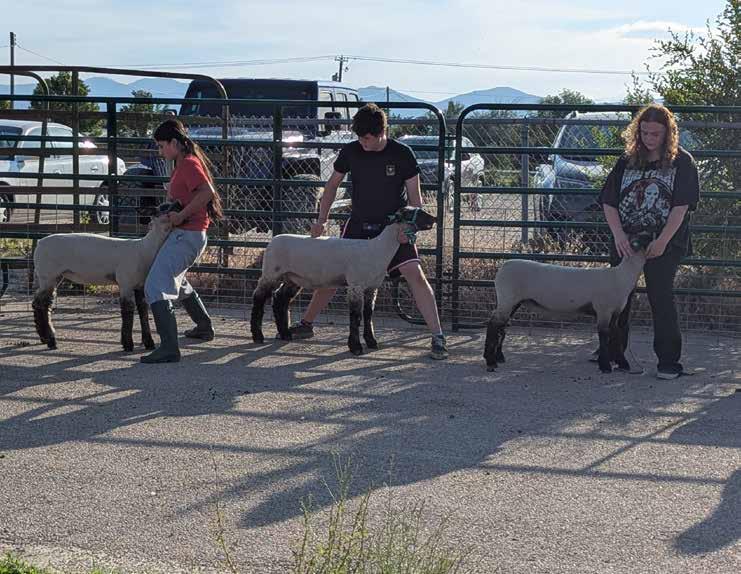
He plans to get an agricultural teaching degree and to someday breed livestock for 4H clubs to help kids learn about where their food comes from.
“Most kids are sitting in their basements playing Minecraft or Fortnite and they don’t really understand,” he said.
“And so getting them out and about and learning about what it takes shows them there’s a lot more that goes into it than just going to the grocery store and picking it up.”
Some students earned their summer ag class credits for a variety of experiences at the zoo, conservation gardens and tractor shows. Others counted the hours they worked at a doggy daycare or veterinary clinic. Many students’ projects centered on work they did at home, such as one student who raised mealworms to feed his family’s chickens.
“I have never seen a kid so proud of bugs,” Riverton High School agriculture teacher Kaylee Simpers said.
Sarah Atkinson, a senior at Riverton High School, helped grow more than 15
kinds of vegetables in her family’s quarter-acre garden and three kinds of fruit in their orchard. This fall, she will be canning the fruits of her labors.
“I’ve been gardening with my mom since before I could remember, and it’s been in my family for generations,” Atkinson said.
Her love of gardening led Atkinson to take science and agricultural science classes at school. She learned about threats to the environment and agriculture industry and has been inspired to find solutions. Her FFA Agriscience Fair project, a proposed solution for preserving soil for irrigated barrier crops, took first place at state and qualified for the national fair in Indianapolis this November.
Atkinson plans to make a difference in the agriculture industry by studying biological engineering in college, but she believes everyone should be educated about how the food they eat is produced so they can make more environmentally-sustainable and ethical decisions about what products they buy.
“Where you get your food from real-
I was happy that he was going to a family who needed him the most, and that’s what really gets me through this, that they’re going to the family that really needs the food.
Jameson Evans
ly does matter, and there are some places that you get your food from that are actually really horrible,” Atkinson said. “There are countless food items that you see every single day at your grocery store that use child labor, or slash and burn agriculture or horrible amounts of herbicides and pesticides with no regard for the environment. So just being more aware of what foods are good and what foods are bad for the environment could really help make a change.”l
Students work with their lambs to practice posture and showmanship for the Salt Lake County Junior Livestock Show and Auction. (Photo courtesy Sydnee Roholt)
Bridging the gap: Making farm-to-fork products affordable
Misconceptions about the cost of locally-produced food keep some families from enjoying the benefits.
By Peri Kinder peri.k@mycityjournals.com
Local farmers markets are welcome events, recognized for delivering fresh, seasonal produce and food items. But for some families, the price of farm-fresh products seems to be too high, creating a nutritional divide for lower-income households.
Natalie Loots wants to change that narrative. She is the Community Food Security Program manager with the Utah Department of Health and Human Services and said there are several programs available to make farmers markets accessible and affordable.
“Our main goal is to make local foods, like fruits and vegetables and other high-nutrition foods more affordable for low-income folks,” Loots said. “Our main program that we operate is called the Double Up Food Bucks program, which has been around since 2015.”
With Double Up Food Bucks, people enrolled in the SNAP program can get up to $20 of free Utah-grown produce with every visit to a participating market. The program offers a dollar-for-dollar match, up to $20, matching SNAP benefits.
“If folks go to the information booth at the farmers market, they swipe their SNAP card and they’ll get tokens for SNAP and then tokens for Double Up to use at the different vendors at the market. There’s no paperwork they need to fill out. All they have to do is have a valid SNAP card that is currently active.”
Loots said the CFSP works to eliminate barriers that limit access to nutritionally-dense foods. Initiatives like the Senior Farmers Market Nutrition Program offers low-income seniors a $50 farmers market voucher to use throughout the season. Utah Produce Rx partners with local healthcare clinics to create a $300 fruit and vegetable prescription patients can use at participating farmers markets.
Caroline Hargraves serves as the marketing director for the Utah Department of Agriculture and Food’s economic development division. She said while prices might be higher on some items at farmers markets, the food quality and nutritional value is much better than what can be found in many grocery stores.
“I think a lot of people don’t understand that it takes time, energy and labor to produce food. We have such a culture in America of expecting food to be cheap but people who produce it deserve a living wage,” Hargraves said. “Farmers get such a small portion of the dollar that the average consumer pays at the grocery store and I think people don’t understand that. But when you buy directly from farmers at a farmers market, that money is
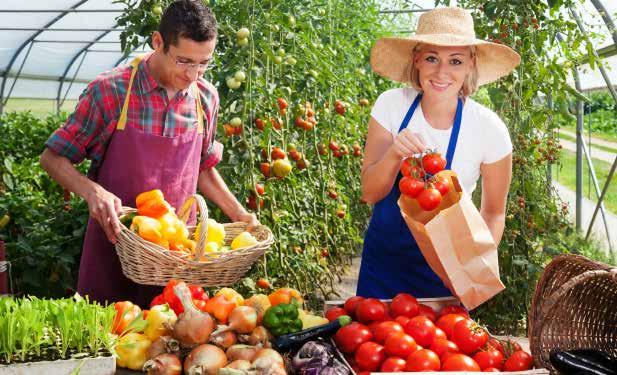
going directly to them.”
Utah’s DHHS operates a local food purchasing assistance program to help socially disadvantaged farm owners. Since the spring of 2022, the program has purchased food from local farmers to distribute to families experiencing food insecurity.
More than 60,000 individuals have received farm fresh food at nearly 600 distri-
bution events across the state. This will be the last summer the program will be utilized, as federal funding has been cut, but organizers are looking for additional funding sources.
A 2025 Utah State University study, Cultivating Community and Commerce: A Summary of the Statewide Social and Economic Impacts of Utah Farmers Markets, found that farmers markets offer more than just fresh
produce. Communities hosting farmers markets fostered community connection, empowered small businesses and contributed to the state’s economy.
The study also found food deserts are prevalent in the state. These areas have limited access to nutritious food, affecting more than 800,000 Utah residents. Farmers markets address this dire need, so affordability is key.
“We have several initiatives at the Department of Agriculture and Food to encourage people to support local farmers and ranchers,” Hargraves said. “It does make a difference, both for that individual, like a farmer or business owner, and for the community. The more dollars we can keep circulating in our local economy, the better. But also it tastes better. With local foods, you can taste the difference.”
For more information about farmers markets affordability programs, or to find participating markets, visit uah.org/get-help.
“Our work is aiming to make food security accessible in a way that it functions as a social determinant of health,” Loots said. “Farmers markets are for everybody, and we try to make eating local produce accessible to everybody…Access to healthy foods affects chronic disease outcomes or health outcomes, longevity and quality of life. Those are so deeply connected.” l



Photo: Don Polo Photography
Locally produced food has better health benefits and can be more affordable than people realize. (Canva stock)
What’s for lunch? A look behind Jordan School District meals
New state and federal rules, fresh local produce and student taste tests are shaping what is served on the meal trays across Jordan District schools.
By Julie Slama j.slama@mycityjournals.com
Seven weeks before 57,000 Jordan School District students return to school, Jordan’s Director of Nutrition Services Katie Bastian is already deep into planning breakfasts and lunches, placing food orders and prepping staff to guide kindergartners through cafeteria lines.
“Food is what we do; I have a team of more than 500 staff members to get it done,” Bastian said.
Jordan, Utah’s fourth-largest school district, serves about 35,000 meals daily across 64 schools during the school year, plus up to 1,000 during summer lunch programs. Meals comply with the Healthy, Hunger-Free Kids Act of 2010, which sets limits on calories, sodium, fat and sugar while emphasizing fruits, vegetables, whole grains and low-fat dairy.
Bastian said students typically choose from five components: meat or a substitute, grain, fruit, vegetable and (fluid) milk. She follows USDA standards, which continue to evolve.
“Most children, like most Americans, are consuming too much added sugars and sodium and not enough fruits, vegetables and whole grains,” Bastian said. “We always want to make the food as delicious and appealing as possible.”
This fall marks the start of a gradual USDA rollout reducing added sugars and sodium through 2027. At the same time, Utah passed HB402 banning synthetic food dyes in schools by 2026–27.
“A lot of our K-12 specific food items don’t have a lot of dyes in them,” she said, but the district is reviewing cereals, Jell-O, sprinkles and other products.
Bastian is also educating families on HB100, which eliminates reduced-price meals — now all students who qualify get them for free.
“It is definitely a juggling act. You would think feeding kids wouldn’t be as complicated as it is, but I have a staff of about nine here in my office who help,” she said.
Elementary schools’ menus, which follow daily and weekly nutrition targets, offer two choices daily; secondary students have 25 or more. There also are vegetarian and allergy-sensitive meals.
“They’ll have the main line, then three or four different hot sandwiches, four different varieties of pizza, three different kinds of salad, mini corn dogs and more,” she said.
Food ordering is districtwide and based

on prior year participation. Bastian uses USDA commodities and works with approved processors to buy in bulk. She purchases several hundred thousand pounds of chicken, beef or pork as well as about 1.2 million pounds of potatoes.
“We try and bring pretty much all high usage items into our warehouse to save money, except for fries; we go through a lot of fries,” she said.
Elementary menus run on six-week cycles, secondary on four. Menu committees replace unpopular meals such as Shepherd’s Pie and introduce new recipes, some of which are requested by families. When they had leftover hash browns, the team created a cheesy potato dish.
“The kids loved it and our staff is skilled enough to try new recipes,” Bastian said. “We make as much as we can from scratch.”
That includes bread items, lasagna, mac and cheese and soup made in the school kitchens.
Even kid-favorites such as corn dogs are made healthier.
“Our corn dogs are low fat, low salt, the dog in the middle is chicken,” she said.
Student feedback plays a role, too. Dietitian interns conduct taste tests with students, guiding menu additions including Asian-inspired dishes.


“We try to offer what they like as well as balancing what’s healthy for them,” Bastian said.
She also coordinates with JATC South students, who supply fresh cucumbers, tomatoes and lettuce for the salad bars in the summer, and with local farmers during the school year to provide apples for Apple Crunch Day and peaches for a Peach Day. She further offers fun meals for students from diverse cuisines for multicultural days to Take Me Out to the Ball Game Day, with hamburgers, hot dogs and a sampling of root beer.
“There has definitely been changes in nutrition services,” Bastian said, now in her third year as director after 14 as a dietitian and recently was a speaker at the state’s 4th Annual Food Safety Conference. “We’re trying to focus on more fruits and vegetables and the connection of making healthy choices when they’re kids, which will follow them throughout their lives.”
She believes school meals have shed their bad reputation.
“The school lunch stigma that the food is gross doesn’t hold true anymore,” Bastian said. “The cafeteria is a welcoming place, with healthy, delicious food which gives students the energy they need and it’s a social time with your friends. I want it to be one of the best parts of their day.”l
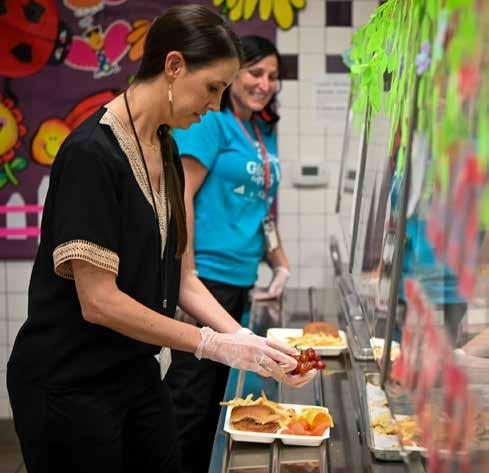

Jordan School District Director of Nutrition Services Katie Bastian fills a summer meal lunch tray as Heartland Elementary’s lunch manager Kimberly Staford looks on. (Photo courtesy Doug Flagler/Jordan















Tips and tricks for lunch remix
Help for parents looking for healthy and fun school lunch ideas.
By Jet Burnham j.burnham@mycityjournals.com
Ultra-processed
foods, sugar and synthetic food dyes are the latest antitheses of healthy childhood nutrition. The USDA has called for changes to school breakfast and lunch menus that limit sugars and utilize locally sourced products. And the Utah Legislature just passed a bill to ban synthetic dyes and certain additives in foods served in Utah schools.
“There's definitely a big trend moving towards the more natural side of things, or trying to move away from that processed food and the artificial dyes,” Sharon Turner, a certified nutritionist, said.
Healthy food not only fuels kids’ physical development but it also boosts their ability to learn, said Turner, who works at the Utah State Board of Education.
“Students need to show up nourished and healthy to learn and perform their best, so it's important that they're getting a good breakfast and a good lunch, and they're able to pay attention in class and socialize and get the full benefit of their educational experience,” she said.
ingredients from a variety of food groups and arranging them in a compartment-style container. Punch up the appeal with whimsical shapes created by cookie cutters or food molds.
2. Pack protein. “The best thing to do would be to pack something protein rich to keep the student satiated throughout the day,” Turner said. Options include hard boiled eggs, nuts, seeds, jerky, cheese, chicken salad, hummus, beans, peanut butter or protein pancakes, quinoa granola bars, edamame and overnight oats.
Try this: A protein-packed, crunchy alternative to potato chips is easy-to-make roasted chickpeas. Rinse and drain a 15.5 oz can of chickpeas/garbanzo beans. Let dry on a paper towel for 15 minutes. Toss with 1 tablespoon of olive oil, 1 teaspoon garlic salt and ½ cup finely grated parmesan cheese. Spread seasoned chickpeas on a baking sheet and bake for 25-30 minutes at 400 degrees or until crunchy. Recipe by Pretty Providence.
At Granite Credit Union, we know saving can be a challenge, especially when you’re young. That’s why we’re excited to introduce the YoungInvestor Savings Account – available exclusively for members aged 0-26 to help you expedite your savings goals. See how quickly your rounded up change adds up! From now until September 30th, 2025, Granite Credit Union will match your Round-Up deposits up to $50. Round-Up Option
Keeping track of what kids should and shouldn’t be eating can leave parents feeling overwhelmed and unsure about what to pack in school lunches. Turner suggests three tips to ensure kids have healthy, appealing and safe food to fuel their learning as they head back to school.
1. Pack a variety. Kids should eat an assortment of foods from wholesome food groups—fruits for fiber, carbs and natural sugars, and vegetables for nutrients such as iron, beta carotene and antioxidants. Whole grains and proteins complete the meal.
Try this: Charcuterie boards are a healthier reinterpretation of the Kraft Heinz Lunchables, which have always been popular with kids. Create your own by mixing and matching different
3. Pack ice. Send foods containing mayo, meat, dairy or eggs in insulated bags with an ice pack. “Not only are you making good choices, but the food is stored properly and safely as well, and it's not going to heat up and make the child sick,” Turner said. If that’s not an option, stick to foods that are shelf stable and appealing at room temperature such as crackers, muffins, freeze dried fruits and vegetables, trail mix or unpeeled whole apples or bananas.
Try this: Laura Fuentes of the website MOMables suggests ice packs should be placed directly by the foods that need to remain cold. However, ice packs can add to the weight of an already heavy backpack and can also sometimes go missing. Her solution is to substitute ice packs with frozen food items that will keep foods cold but eventually thaw to become part of the menu. Foods you can freeze as an alternative for an ice pack include a juice box, bottled water, yogurt tube, applesauce pouch, banana (peeled), berries, grapes, pineapple or mango chunks, mini muffins and cheese sticks. l
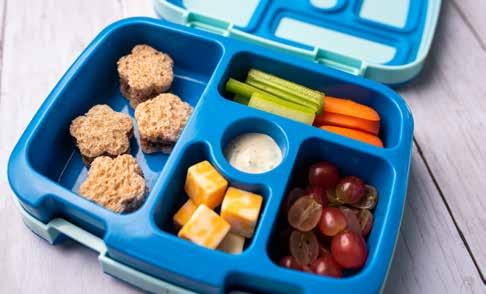
Containers with compartments creates a colorful charcuterie-style lunch. (Adobe stock photo)
Survey seeks questions readers have for their local government candidates
Fill out our survey so your candidates know what questions to answer for our Voter Guide.
Welcome to the City Journals survey! We're happy to have you here and for the opportunity to learn about how our newspapers are being utilized in our communities.
In the October issues of our newspapers, we will publish a Voters' Guide to provide readers with information about the candidates listed on each municipal ballot.
We understand how voters can visit many different resources and websites and end up looking at the same information—if not the exact same wording or candidate platforms. We hope to provide readers with the information they want to know about each
candidate. Take a moment to consider what information ultimately makes or breaks your decision to vote for a specific individual in our local elections.
“It’s important to have candidates answer the actual questions their constituents would ask them,” said City Journals Creative Director Bryan Scott. “This is your chance to do that.”

Please respond to the survey found through the QR code, which will take less than three minutes to complete.
Your response will help guide the design of our Voters’ Guide.
The “submit” button must be clicked before Monday, Aug. 18 (at 11:59 p.m.).
Thank you for your continued readership and support of your local staff here at the City Journals.



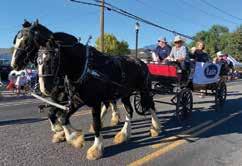




Larkin Mortuary’s dedication to the Utah community is deeply rooted in its history and family values. For over 140 years, spanning seven generations, the Larkin family has proudly served Utah families in their time of need. This commitment extends beyond providing funeral services; Larkin Mortuary actively engages with the community by hosting events and giving back through various service initiatives such as the annual Memorial Day Program, golf tournament, Trunk or Treat and Live Nativity.





• Stop passing laws just for the sake of passing laws
• Promote and establish responsible housing and growth for the city
• Be frugal with the public’s hard-earned tax dollars
• Be accountable to ALL the voters – not just those who supported me
• Only support issues that will contribute to our best future as a city

Scan this QR code to fill out the short survey.


Our curated collection features the work local artists, crafters, and experts in antiques and vintage nds. With our stock rotating seasonally, you’re sure to nd the perfect gift or something special for yourself.
LOCAL ARTISTS & CRAFTERS
Explore handcrafted stained glass pieces, unique jewelry, art prints, decor, christening dresses, and so much more.
YEARS GONE BY
Our antique and vintage vendors are passionate about rare nds and everyday items with a unique air. Discover clothing, housewares, and a variety of other treasures.
Come nd your next treasure!
We are open Monday through Saturday, from 10 am to 6 pm.
801-352-8636
1100 W. 7800 S., #2 West Jordan, UT

Located in historic Gardner Village



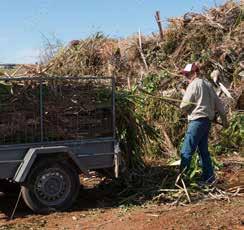
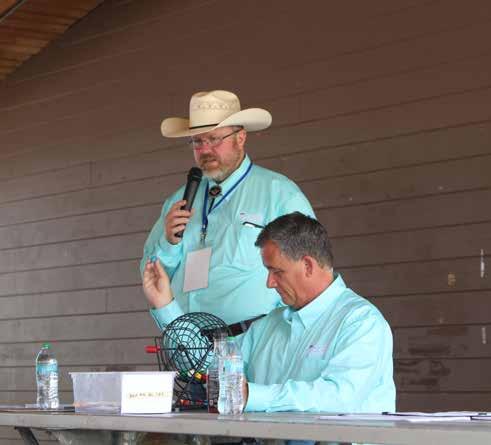

August is National Self Awareness Month





















Councelmembers Kent Shelton (cowboy hat) and Bob Bedore run the Bingo station at West Jordan’s Western Stampede. (City Journals)
Carnival rides were among the many attractions for the annual Western Stampede which included a parade, rodeo, music, food trucks, butterflies and market vendors. (City Journals)








Buddies, ribbons and joy: Unified Sports Day creates unforgettable memories
Nearly 1,000 Jordan School District elementary students with and without disabilities team up for a day of fostering friendships, building confidence and fun through inclusive sports.
By Julie Slama j.slama@mycityjournals.com
Heartland
Elementary second-grader Charles Richardson beamed as he proudly showed his red ribbon.
“I got second place in running,” the 8-yearold said. “My favorite thing was running, throwing, jumping…I jumped all the way to the end and got a ribbon. I like achieving my goals. Zina helped me today.”
Zina, his peer buddy, was one of many student volunteers from elementary schools across the district who joined in the Unified Sports Day. The event brought together nearly 1,000 students from 15 schools in the Jordan School District to take part in activities such as the softball toss, 50-meter dash and long jump. Some even ventured into the longer “cross country” run.
The Unified Sports Day is held in partnership with Special Olympics Utah to encourage inclusion and teamwork between students with and without disabilities, said Courtnie Worthen,
Special Olympics Utah’s Unified Champion Schools program manager.
“It brings an opportunity for students to compete and for students with and without disabilities to be excited about their friends’ accomplishments,” she said.
Jordan Secondary Teacher Specialist and Transition Specialist Ashley Calhoun chaired the Unified Sports Day committee. She coordinated the event alongside 45 volunteers, including Riverton High School student body officers and members of the Peer Leadership Team.
“We have students with like abilities compete against one another,” she said. “Prior to this, students are with their gen(eral) ed(ucation) peers for PE and the teacher modifies and adapts the activity to meet each kid’s needs. They practice these skills in PE and we score them so they can be matched to compete here.”
Jordan’s District Athletics and Activities Director Bryan Veazie said a major goal is to foster student leadership and create inclusive school cultures.
“We want all of our schools to become unified champion schools through the Special Olympics of Utah,” he said.
Historically, the event focused on giving students with different abilities a chance to compete in four sports. But last year, peer student leaders were invited to participate alongside them. That pilot program grew and now all 15



Jordan School District students with differing abilities run together during the 50-meter dash, as seen here with two Golden Fields students, fostering friendship and fun through an inclusive sports day. (Julie Slama/City Journals)
An Antelope Canyon Elementary student was all smiles after finishing the 50-yard dash and being rewarded a ribbon at Jordan School District’s Unified Sports Day. (Julie Slama/City Journals)
A Riverton Elementary student was excited to get a high five and a ribbon after winning her 50-meter dash heat during Jordan School District’s Unified Sports Day, an event designed to bring confidence and fun. (Julie Slama/City Journals)
schools have established leadership programs mirroring those at the middle and high school level, resulting in close to 1,000 elementary students participating.
To accommodate the increased participation, the event was split across two days and held at Riverton High School’s track and field. This helped keep the event manageable and enjoyable for all students.
“Another thing we decided to do is to make sure each school had T-shirts as before, some did and some didn’t,” Veazie said. “It has helped improve the organization of the event, helped teachers keep better track of their students and it helps create support for unified programs in the elementary schools.”
To provide the T-shirts, the committee partnered with the Jordan Education Foundation, which secured the donation from Destinations Travel’s Kip Lambert.
Shirts were coordinated to match each school’s colors, and students were allowed to keep them as mementos of the day, said JEF Executive Director Mike Haynes.
“It’s been fun to see unified partners out running with buddies, doing all the events together,” he said. “It’s a big culminating event with a lot of excitement, and it engages the community to provide students’ success, engagement and inclusion. It’s one of the coolest things we do.”
At Monte Vista Elementary, sixth-grader Brianna Griffiths serves as a school ambassador and was paired with a buddy for the event.
“I look forward to seeing my buddy every day and working with them; every Friday, we play together in the gym, if it’s human hungry hippo, ping pong or having a waffle party; it’s always lots of fun,” she said. “We’ve been looking forward to sports day because my buddy is energetic and likes to run, but also because they deserve attention. Sometimes people forget about them, but we shouldn’t. They’re sweet and give joy to everyone.”
Cassidy Wood, a special education support teacher at Golden Fields Elementary, appreciates not only her students’ opportunity to showcase the skills they work on, but their successes as well.
“I love seeing their smiles and excitement when they tell their peers: ‘I did it, I did it,’” she said.
At Golden Fields, third-grade students are paired with special education students throughout the year. On Unified Sports Day, after cheering their peers onto the bus, they joined them to support them in person.
“We’ve really embraced our special ed students; our studentbody is understanding how to support kids, respect and understanding differences and learn how to help everyone feel welcome and part of a school community,” Principal Nick Hansen said. “This is a great thing. The kids are genuine and wanting to help everyone feel included and supported, and it’s mutual. They’re giving, but they’re receiving a lot more back. They feel happiness and joy from having friendships with these students of diverse backgrounds. It’s a good day.”l

























How the Food Truck League changed Utah’s dining culture
More than 250 trucks serve up vibrant menu items at thousands of events each year.
By Peri Kinder peri.k@mycityjournals.com
It’sbeen 10 years since the Food Truck League held its first event at Sugarmont Plaza in Salt Lake County. Organizers didn’t know what to expect but figured they’d be lucky to get 500 people to attend. When 2,000 people showed up, Food Truck League Founder Taylor Harris realized he might be on to something.
A decade later, food trucks have transformed Utah’s culinary landscape, introducing cultural fare, fusion meals and unique twists on old favorites. More than 250 food trucks are registered with the Food Truck League in Utah, each serving vibrant, bold and palate-pleasing menu items at approximately 10,000 events annually.
“As far as small companies coming up, Utah is an entrepreneur-friendly place,” said Eliot Steimle, Food Truck League general manager. “For anyone who wants to get into a restaurant, a food truck is a nice half-step in that direction, where they can get experience, find something they can experiment with and build a following.”
Food trucks like Cupbop, Waffle Love
and Salt Lake Barbecue have taken their menus into brick-and-mortar locations or food halls where they can expand their customer base. Other chefs like the ability to travel across the county, sharing their food with new communities.
Successful members of the Food Truck League utilize savvy marketing strategies and leverage social media platforms to cultivate loyal fans. Whether it’s behind-thescenes content, interactive videos, daily location updates, tailored hashtags, curated photos or exclusive items sold only at specific events, creative brand-building is an important part of a food truck’s story.
“It’s fun to watch them come into their own,” Steimle said. “Most of the time, it’s a chef who starts their food truck, but that marketing element of trying to figure out what their brand is and their identity, that part is really fun.”
As the state’s food truck industry evolved, catering everything from office lunches and corporate events to weddings and concerts, chefs have learned that flexibility and collaboration are some of their best tools. Being able to adapt to weather conditions, listening to customer feedback and pivoting when needed can help a food truck owner stand the test of time.
Legislation and permitting for food trucks have also improved over the last few
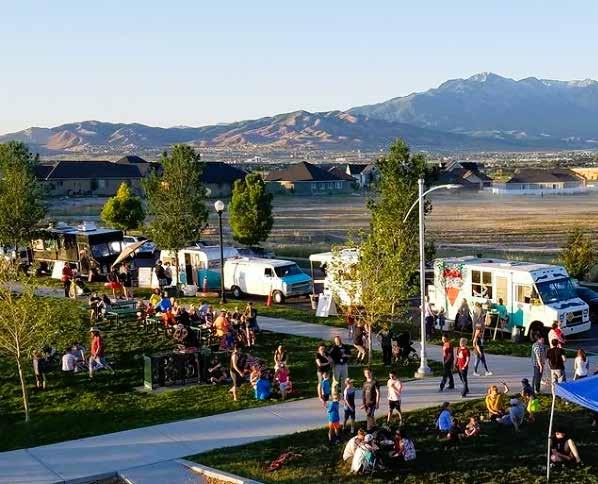
years. When food trucks first appeared on the scene, every city had different regulations and licensing requirements that owners

had to deal with. Often, food trucks had to obtain health permits, fire inspections and business licenses for each city they visited.
“Two or three years ago, the state legislature passed a bill that essentially got rid of all of the secondary permits and licenses,” Steimle said. “That was a huge game changer for the food trucks.”
Not only do food trucks introduce new foods to residents, but food truck events bring the community together, turning parking lots into social gatherings and encouraging inclusion through global flavors. Mexican foods, pizza and barbecue seem to be the most requested trucks, but Hawaiian fare, dessert and breakfast items are also popular.
Several cities host food truck nights and Midvale recently opened a plaza built for food trucks next to City Hall. The idea of connecting people is a prevalent theme of the Food Truck League, whether it’s foodies, neighbors or city residents. The League is also dedicated to building a community for food truck owners and offers coaching and feedback to help them improve.
“We try to host an event every year where all the food truck owners get together, network and talk, outside of having to work in the food truck,” Steimle said. “That’s a lot of fun and creates a great opportunity for them.”
To browse the selection of food trucks, book trucks for a special occasion or to search for events where food trucks will attend, visit foodtruckleague.com or follow @ foodtruckleague on Instagram. l
Since its first event in May 2015, the Food Truck League has grown to include more than 250 food trucks, serving thousands of people across Utah each year. (Courtesy of the Food Truck League)




























Favorite local eats for every mood and moment
By Holly Curby hello@hollycurby.com
hether it's the sizzle of hibachi flames, the comfort of pasta inside a vintage trolley, or sharing fondue by candlelight, the way we dine shapes our memories just as much as the food itself. In a world that increasingly values experience as much as flavor, eating out has become more than a necessity or luxury— it's a ritual of connection.
According to the National Restaurant Association, more than 60% of Americans dine out at least once a week, and 45% of adults say restaurants are essential to their lifestyle. From special occasions to everyday indulgences, here’s a roundup of my personal favorite local spots, categorized by the kind of meal and mood you might be in.
Sometimes, the best side dish is fresh air. When the weather’s kind, there’s nothing like dining al fresco:
• Trellis Café – My personal go-to for patio dining. Nestled among greenery, the ambiance is as fresh as the seasonal dishes. Ideal for a relaxed summer lunch, but be sure to make reservations and tell the amazing hostess, Jenn, I say hello.
• Cafe Molise – With an elegant courtyard downtown, it's perfect for Italian fare under the open sky. Try the penne di caprino and creme brulee.
• Silver Fork Lodge – Up Big Cottonwood Canyon, this spot offers rustic charm, a wooden deck and mountain air that makes everything taste better.
• The Terrace Cafe at St. Regis (Deer Valley) – Elegant, upscale and offering panoramic views, their patio is a destination in itself. Guests are transported up to the restaurant in the complimentary funicular which is an experience in itself.
• The Cliff Dining – True to its name, you’ll dine perched above scenic terrain. Great food and even better sunsets.
• Ruth’s Diner – Escape the city into the serene ambience of Emigration Canyon. Check out their website for a schedule of live music on the patio.
If you’re after a unique setting, these places deliver delicious food with a side of novelty:
• Spaghetti Factory – Where else can you enjoy classic spaghetti and meatballs while sitting inside an old trolley car? It's quirky, nostalgic and surprisingly cozy.
• Prairie Schooner – Steak and hearty American fare served in covered wagons under dim lantern light. A nod to Utah's pioneer past, this one’s both tasty and theatrical.
• Billy Buncos – A fun, funky place where you dine under cars suspended above you. The food? Equally creative and satisfying.
If your meal is also a game night or show, these places turn dining into entertainment:
• Good Move Café – Board games and bistro-style eats? Count me in. It’s the perfect spot for casual hangouts, family nights or a low-key first date.
• Benihana or Bonsai – Teppanyaki chefs cook right in front of you with flair and fire. It’s dinner and a show, seasoned with soy sauce and laughter.
• Desert Star Playhouse – Family-friendly musical parodies in a western-themed saloon. Get ready to cozy in with your neighbor as you share a pizza or enjoy a good old-fashioned root beer float.
Whether it's a taste of Israeli cuisine or a club sandwich, here are a couple more must-visits:
• Feldman’s Deli – A standout for East Coast-style deli fare with an Israeli twist. Their pastrami sandwich is legendary, and every entree ordered brings a much-anticipated bite.
• The Coffee Shop at Little America Hotel – Sure, it's the sister hotel to the luxurious downtown Grand America, but their club sandwich? Perfection. Pair it with a walk around the manicured grounds of their neighboring sister hotel for a surprisingly affordable treat in an upscale setting.
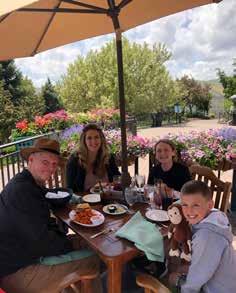
Dining out isn't just about convenience. It’s about atmosphere, ritual and the pleasure of sharing space with others—whether that’s with strangers gathered around a teppanyaki grill or loved ones sharing dessert under a starlit patio.
As Julia Child once said, “People who love to eat are always the best people.” And luckily, our local food scene is full of places that let you eat well—and live fully.
Want to learn more about how to up your dining at home experience? Check out Holly’s Highlights podcast Season 3 Episode 14. Available wherever you listen to podcasts. Have a favorite dining spot or want me to come visit your restaurant? Connect with me at www.hollycurby.com. l






Patio dining at Thanksgiving Point’s Trellis café. (Holly Curby/City Journals)
















Editor’s note: the final budget votes will be Aug. 19 and Aug. 26, first to approve a property tax increase and then to finalize the budget. This letter has been lightly edited for clarity.
It is West Jordan budget time and if you need something to help you sleep, here is the link to the proposed budget. https://www.westjordan.utah.gov/wp-content/uploads/2025/05/FY-2026-Mayors-
Letter to the Editor: West Jordan budget time
Proposed-Budget-2025.05.06.pdf






I haven’t made it through all of it, but below are some items that caught my attention. If you have concerns, contact the mayor and members of the city council. Those “free events” the city sponsors, aren’t so free. In the current fiscal year, the cost for city events will reach $1,219,583. The mayor has proposed increasing the event days from 75 to 132 with a projected additional cost of $72,795, which increases the total to $1,292,378. Activities are to include: “Crafts & Cravings, Wellness Wednesdays, Connecting Cultures, Splash Paw-ty, Skatecamps, Farmers Market,” with the stated goal to “increase the quality of life by building a sense of community and belonging.” While such a goal is laudable, community spirit doesn’t come by sitting next to different people each time, who may not even be from your city, when you attend an event. Rather, it is built as neighbors help one another with a house or yard project, shovel snow for those who need it, get involved in their children’s schools, chat with friends and neighbors who walk by while they do yard work, help others in their neighborhood who





are sick or elderly, or participate with others in religious organizations. A true sense of community can’t be purchased. Additionally, I am puzzled as to how the number of event days can increase by 76%, but the total cost for the events only increases by 5.9%. I suspect there is more to come.
Prior to the construction of the new 10-million-dollar arts building, which the city must now maintain, Mayor Burton assured those of us with concerns, that the arts council would pay fair market rent just like everyone else. But on page 142 of the budget, it states that $85,000 is to go to the arts council, and I have been told that it is so they can pay rent. That doesn’t seem like a fulfillment of the mayor’s promise.
From the numbers below, which were presented to the mayor and city council by the arts council, it is plain to see that the taxpayers of West Jordan are not only paying a lot to subsidize an organization with few participants, but more than half are not even residents of West Jordan. If you’d like to see the slides of the Arts Council presentation, go to the meeting materials of the March 11 West Jordan City Council meeting. It can be found at westjordan. privegov.com/public/portal. The numbers reported begin on page 21.
Some members of the Arts Council have hinted that the new 10-million-dollar arts building isn’t large enough and will need to be expanded to accommodate the orchestra’s performances. Instead, on the few occasions that a larger venue is needed, such as for the Messiah sing-along, hopefully the Viridian Library, the Mid-Valley Performing Arts Center, or a local school auditorium will be utilized.
To preserve our nation, we need every level of government to exercise fiscal restraint—which means that we the people need to carefully consider what we ask our government to do. Remember, needs vs wants. If we ask the government to fulfill all our wants, it will of necessity, take more and more of our money, which will make it more and more difficult for us to fulfill our own needs.
Some counter that, when spread among all the residents of West Jordan, the amount per person to fund the various activities is small. Consider the sage advice of Benjamin Franklin: Beware of little expenses. A small leak will sink a great ship.
Callean Laird





to




There was no “gentle parenting” in the ’70s, especially at the dinner table. You either ate what was prepared for you, or you were labeled a sniveling, spoiled brat who didn’t care if children in China starved because you wouldn’t eat your meatloaf.
One time, I was forced to stay at the table until I’d eaten all my potatoes. I blame my dad. He had told me that potatoes have eyes and then lost his mind when I refused to eat mashed potatoes. I was convinced the lumps were eyeballs and I was not about to eat potato eyeballs.
I wasn’t trying to be picky, I just didn’t like things that were mushy, smelly, runny, squishy, eggy or slathered in mayo.
Grandma Stewart considered me the most coddled child in history. She could not fathom how I could reject her slimy bowl of lima beans, which included (if memory serves) onions, ham, shampoo and arsenic.
“If you don’t eat your lima beans, it just means you're spoiled,” she huffed when I put my head on the table to cry. She said the same thing when I refused to eat bread crust, cottage cheese, tuna fish or canned beets.
Side note: Grandma loved Jordan almonds, the only food she refused to share. She’d hide them from the grandkids because she knew we’d eat them. We scoured the cabinets until we found them and devoured every last one. I think that’s called a self-ful-
Foods that ruined my childhood

filling prophecy, Grandma.
As a kid, terrible food was everywhere. If I wasn’t being subjected to a disgusting recipe Mom found in a McCall’s magazine, I was being betrayed by school lunch ladies. They’d slide a quivering square of delicious cherry Jell-O, topped with whipped cream, onto my lunch tray. But the joke was on me when I took a big bite of the tasty dessert only to learn it was sour cream, not whipped cream. Who does that to a child? Sadists, that’s who!
While eating dinner at a friend’s house, her mom shamed me for not eating the disgusting canned peas. So, I ate it and cried. It was just another meal I was forced to eat, like a hostage.
Sometimes, I’d take a proactive approach when it came to avoiding foods I didn’t like. Mom often made chicken pockets, which were shredded chicken mixed with cream cheese, baked into crescent roll dough. I hated cream cheese (mushy,

smelly). When I saw it in the fridge, I cried. I hid the box of cream cheese behind the wilted lettuce in the vegetable bin, but Mom always found it.
Other ploys included acting sick (rarely worked), “forgetting” about dinner while playing outside (never worked), pretending to sleep on the couch (sometimes worked) and throwing a fit at the dinner table (never worked, plus I lost dessert).
I don’t know why Mom refused to accommodate my delicate palate. I was only repulsed when it came to sauces, dressings, mustard, canned foods, Vienna sausages, tuna, cottage cheese, sour cream, maple syr-







up, vegetables, macaroni salad, yogurt, the textured vegetable protein popular in the ’70s or anything slathered in mayo. It didn’t matter. I was expected to “Learn to like it, or else!” Or else, what? A grateful digestive system? A lack of nightmares? A healthy relationship to food?
With four daughters, I understand how hard it is to make meals for ungrateful children. I’ve had daughters who refused to eat pizza, spaghetti, meat, dairy products, lasagna, hamburger casserole or anything with onions. They probably have their own list of foods that ruined their childhood. That’s what therapists are for. l







Dr. Jeff Matson, DC
Dr. Matthew Smith, DC
